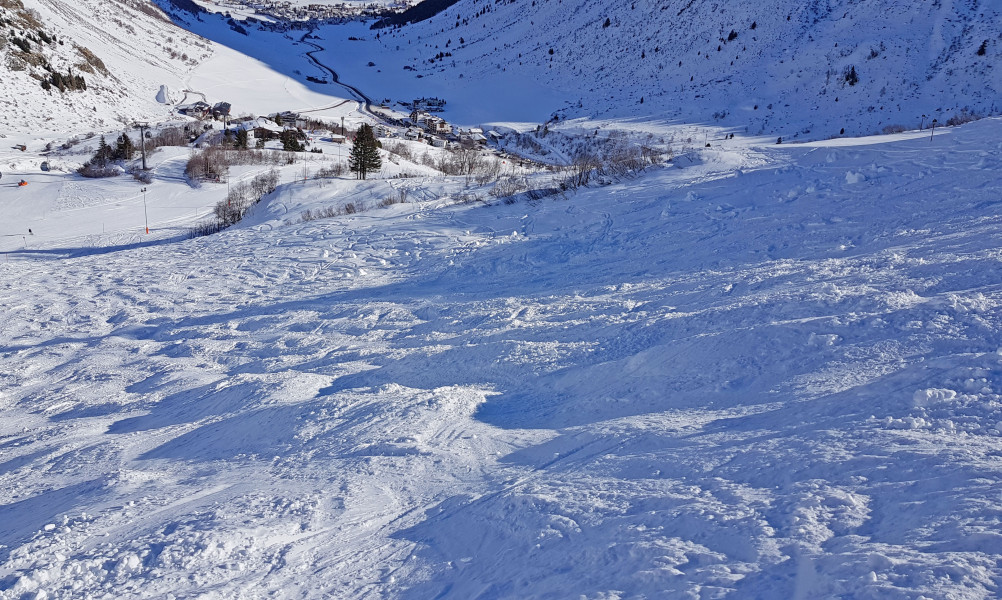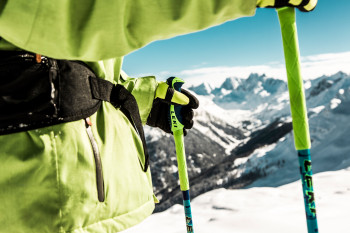Elegantly skiing down a mogul run is the dream of most ski fans. But the combination of technique, stamina and speed that is needed to do so can be quite a challenge. Follow our advice to master them in no time.
Preparation
Mogul runs are among the most demanding and exhausting terrains. No two moguls are the same, so skiers need to be able to react to each run's individual characteristics. This requires a high level of flexibility.
High body tension as well as strong torso and thigh muscles are important for mogul skiers.
To get yourself ready, it's important that you start training these muscle groups even before the skiing season has started. Rope-skipping is a good way of getting your whole body into shape. You can strengthen your leg muscles by bike riding and using a leg press.
Warming up before you head onto the ski slope is at least equally as important as the training beforehand. Mogul runs especially are very demanding for your muscles and joints.
Getting started slowly
Even if you're in good shape, don't just dive onto the steepest mogul run you can find. Try skiing under easy terrain conditions and at a lower speed at first to develop your technique.
A good idea to practice is making extremely short and tight turns on a normal ski run to simulate the short rhythm on mogul runs. Afterwards, try skiing in more uneven terrain to improve your balance.
Strength lies in calmness
Since the space on difficult moguls is limited, don't start racing down as soon as you get there. Observe the area from above and take some time to choose 'your' line.
Controlling your speed is essential at the beginning, so keep your first turns on a mogul very slow. Be sure to move foresightedly. Skiing mogul runs is a lot easier when you're prepared for upcoming bumps.
The right position
Keep your center of gravity above the middle of your skis the entire time. Only then will you have the balance that is necessary to master a mogul run.
Flexible legs are the key:
Your legs need to stay as flexible as possible during the ride. Ankle, knee and hip joints have to work permanently to maintain contact to the ground. Remember to keep your skis together closely.
Your upper body and arms should stay as still as possible, however. Only if your upper body is calm and tense you'll be able to reach the highest flexibility in your legs.
Putting your technique into practice
The right technique depends on the mogul's difficulty.
Small and medium-sized moguls:
Here, the best way is trying to ski around the bumps. If it's too late to do so, draw up your legs when going up the bump and stretch them again afterwards.
(Very) high moguls:
Difficult mogul runs require a high level of technical ability since there is hardly any space to ski in your own line. Changing curves is done while you're riding the bump. Keep your legs straight during the curve and pull them to your body during the curve switch. This maneuver is called the “reverse technique” since it's the exact opposite of the technique used on even slopes.
General advice
Information:
To avoid any unpleasant surprises, find out beforehand what kind of mogul you're heading onto. Steepness, length and terrain type play an important role.
Legs and stomach:
Your hands should be visible from the corner of your eyes to make quick reactions possible. Tensing your stomach muscles helps the tension in your upper body while leading to more flexibility in your legs at the same time.
Take breaks:
Mogul runs require a lot of energy, so it's important to take enough breaks. It's better to make one or two additional stops instead of risking a fall and potential injuries.
Get to know the mogul:
Timing and rhythm are two important factors when you're skiing a mogul. To put both into practice as good as possible, you need to be willing to adjust to the mogul run's features. The slope sets the rhythm, the skier reacts.
With these tips and a little bit of practice, you'll soon be enjoying yourself gliding down the mogul runs of your favorite resorts.






